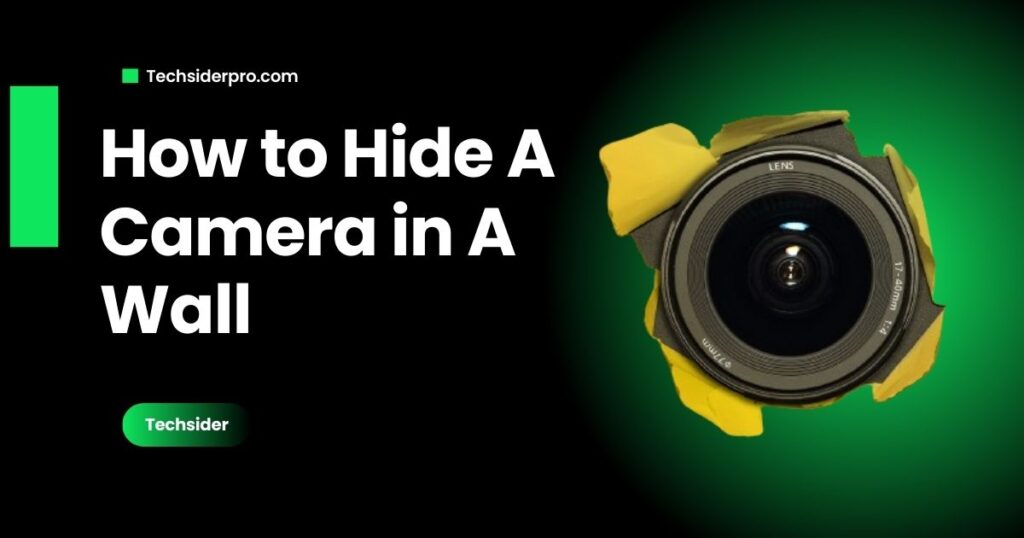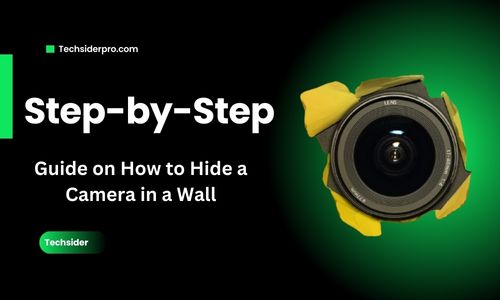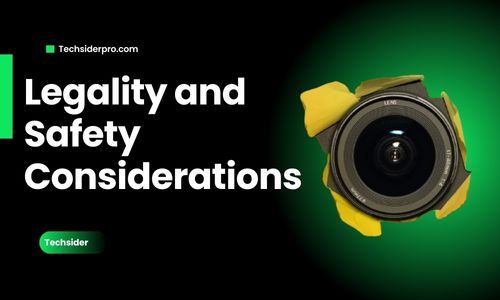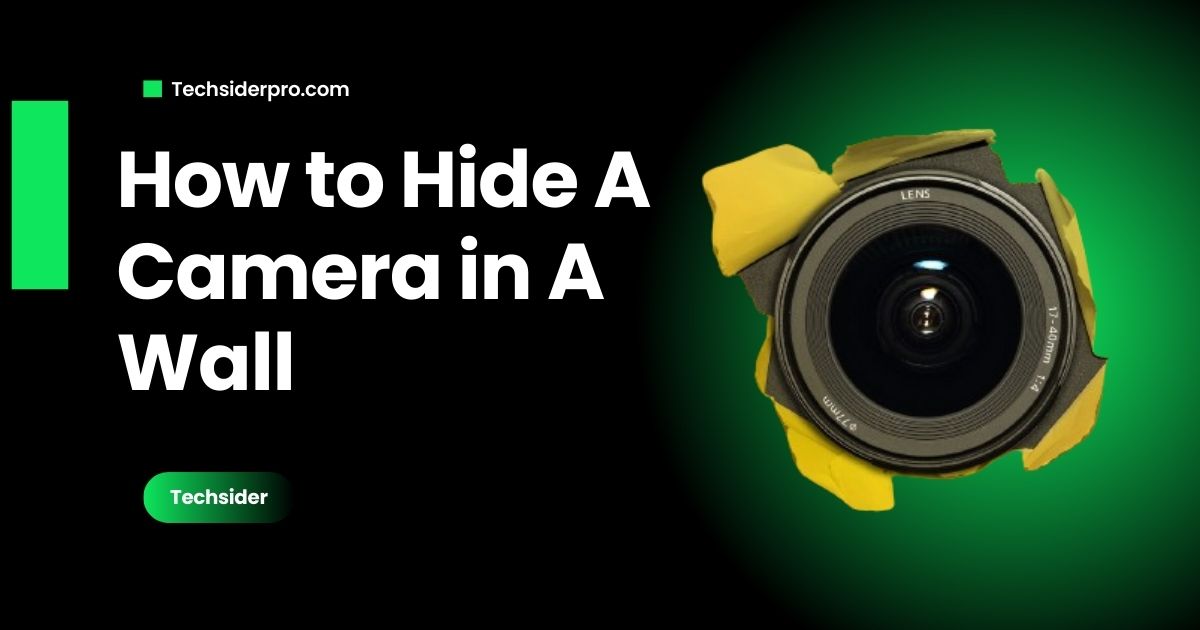
Security is a priority in today’s world, and one effective way to enhance it is by using hidden cameras. Installing a camera discreetly in a wall allows you to monitor activities without being obvious. Whether you’re safeguarding your home, business, or a specific area, knowing how to hide a camera in a wall ensures an unobtrusive yet effective surveillance system.
Reasons to Conceal a Camera in a Wall
- Discreet Monitoring and Surveillance
A hidden camera lets you monitor activities without drawing attention. This is especially useful for situations like monitoring caregivers, employees, or suspicious areas. - Aesthetic Appeal
Visible cameras can disrupt the aesthetics of a room. Hiding them in a wall ensures that your décor remains undisturbed while maintaining security. - Protection from Vandalism and Theft
A concealed camera is less likely to be tampered with or damaged, keeping your surveillance equipment safe. - Deterrence of Potential Intruders
The mere possibility of hidden cameras can discourage potential intruders, providing an additional layer of security. - Legal and Compliance Considerations
Before installing hidden cameras, make sure you comply with local laws. In many places, recording video or audio might require permission. Always familiarize yourself with the legal requirements in your area.
Choosing the Right Camera
- Small, Compact Design
Choose a compact camera that easily fits within wall cavities for maximum concealment. - Wide-Angle Lens
Select a wide-angle lens to cover a larger area, helping to reduce any blind spots. - Low Light Sensitivity
If the area has limited lighting, ensure the camera functions well in low-light environments to provide clear footage. - Wireless or Wired Options
Wireless cameras are easy to hide without dealing with visible wires, but consider wired options for consistent power and connectivity. - Motion Detection and Night Vision
Cameras with motion detection and night vision capabilities offer enhanced functionality, ensuring footage is captured in all conditions.
Step-by-Step Guide on How to Hide a Camera in a Wall

Step 1: Choose the Right Camera
Pick a small, high-quality camera that fits your location and needs.
Step 2: Select the Best Location
Ensure a clear line of sight and consider nearby power outlets and Wi-Fi signal strength for optimal performance.
Step 3: Create an Opening in the Wall
When drilling into the wall, use the correct tools to create a secure fit for the camera.
Step 4: Install the Camera
Place the camera inside the hole, fastening it with screws or adhesive, ensuring it’s aligned properly and aimed in the desired direction.
Step 5: Conceal the Camera
Use spackle or drywall compound to cover the camera hole, blending it seamlessly into the wall. Ensure the camera’s lens remains unobstructed.
Step 6: Finishing Touches
Once installed, paint or repair the wall to seamlessly blend the camera with the surroundings.
Creative Hiding Ideas

- Behind Paintings or Picture Frames
Perfect for spaces with artwork, allowing the camera to remain hidden behind common objects. - Inside Air Vents or Ventilation Grilles
An air vent provides a great way to hide the camera while keeping it functional. - As a Light Fixture or Electrical Outlet
Consider hiding the camera in functional objects like light fixtures or electrical outlets for added discretion. - Behind Decorative Objects or Plants
Position the camera behind a decorative object or plant, making it less likely to be noticed.
Placement and Positioning Tips
- Install Near the Ceiling
Cameras placed near the ceiling offer a better angle and wider coverage of the room. - Consider Lighting and Wi-Fi Signal
Ensure the camera is located in a well-lit area and within range of a strong Wi-Fi signal if it’s a wireless model. - Secure Against Tampering
Choose a location that is hard to access, making it difficult for anyone to tamper with or disable the device. - Use Weather-Resistant Cameras for Outdoors
For outdoor applications, select a weather-resistant camera to withstand environmental conditions.
Additional Tips for Hiding Cameras
- Mind Power Outlet Distance
Keep the camera near a power source or opt for a wireless camera with long battery life for ease of installation. - Use Motion-Activated Cameras
Motion-activated cameras conserve power by only recording when movement is detected, avoiding long periods of inactivity. - Test the Camera Before Full Installation
Ensure the camera is functioning properly and capturing the desired view before completing the concealment process. - Opt for Hardwired Connections for Reliability
A hardwired connection offers a more reliable signal and reduces the risk of interference or hacking.
Legality and Safety Considerations

- Understand Local Laws
Research local regulations regarding the use of hidden cameras. In some areas, it may be illegal to record without consent, especially in private spaces. - Respect Privacy
Avoid positioning cameras in areas where privacy is expected, such as bedrooms or bathrooms. - Inform Anyone Recorded
If required, inform individuals about the possibility of being recorded to avoid legal complications. - Ensure Proper Maintenance
Routinely check the camera to verify that it’s working properly and hasn’t been tampered with.
Common Mistakes to Avoid
- Ignoring Local Laws
Always verify that you’re compliant with local laws before installing hidden cameras. - Not Securing the Camera
Improperly securing or concealing the camera may result in poor functionality or detection. - Forgetting to Adjust Camera Settings
Customize the camera’s settings to handle lighting and environmental conditions for optimal performance. - Not Testing the Camera
Test the camera thoroughly to ensure it works properly and provides clear footage.
FAQ Section
What Type of Camera is Best for Concealing in a Wall?
Compact cameras with wide-angle lenses and low-light sensitivity are ideal for wall installations.
Can I Hide Outdoor Security Cameras?
Yes, outdoor cameras can be hidden using camouflage techniques or installing them in inconspicuous locations.
Is It Legal to Hide a Camera in a Wall?
The legality of hidden cameras depends on local regulations, but they are generally permitted in public or semi-public areas.
How Do I Choose the Right Location?
Consider visibility, lighting, and proximity to a power source when selecting a location.
Conclusion
Hiding a camera in a wall is an excellent way to maintain discreet security while ensuring comprehensive surveillance. By following this guide, you can easily select the right camera, find the perfect location, and install it without compromising aesthetics or functionality. Always stay compliant with local laws and prioritize privacy while enhancing the safety of your home or business.

